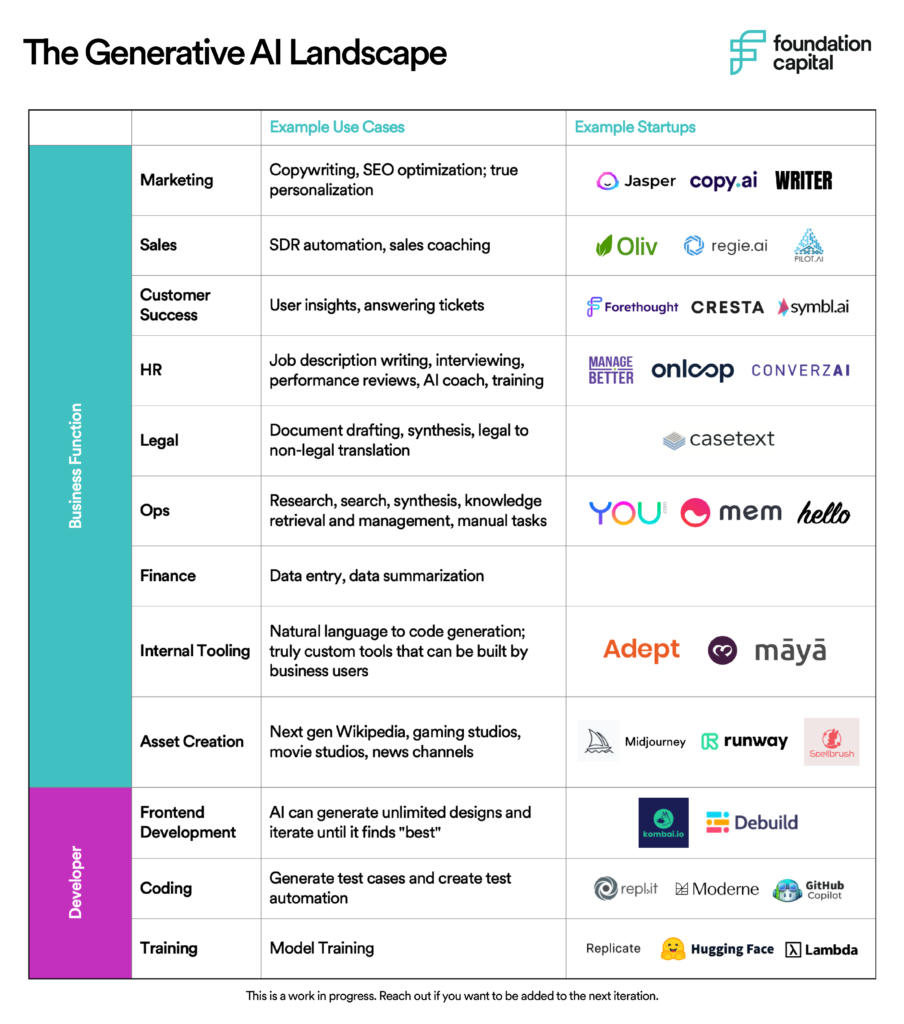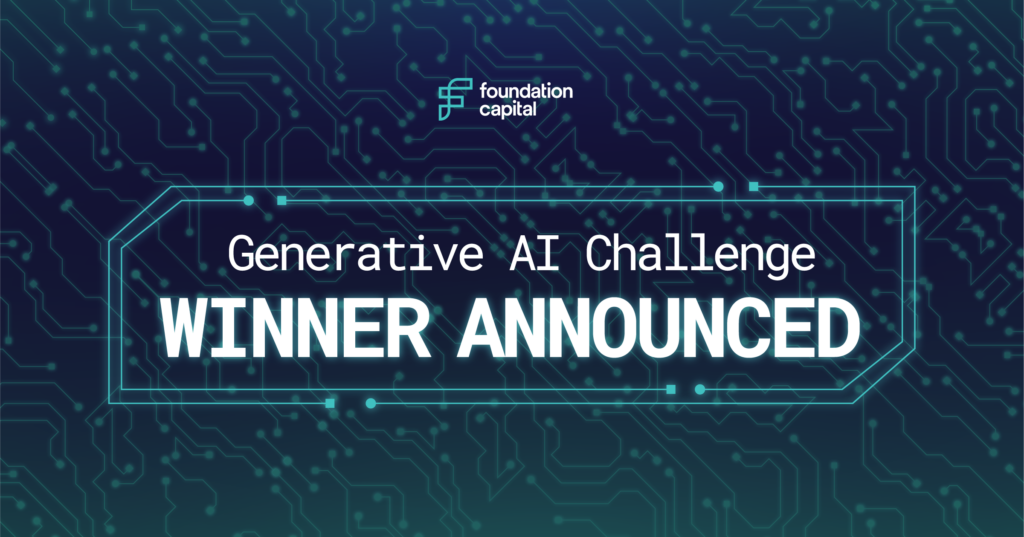Jasper and the Past, Present, and Future of Generative AI
I’m thrilled to share the news that Jasper, an AI content platform, has raised a whopping $125M Series A! Foundation Capital co-led the company’s first seed round a couple of months after it launched.
10.18.2022
By Joanne Chen

Since then, Jasper has grown at a quicksilver pace and is now in the running to become the fastest AI company to reach $100M. We are so proud of Dave, Chris, JP, and the entire team on reaching this important milestone, and are excited to double down in the A.
Jasper was also the fastest investment that I ever committed to. But in retrospect, behind that instantaneous decision was a decade of work done by me and my partners at Foundation. Our “fieldwork” (studying developments in the technology, talking to executives, meeting startups) led us to the realization that large-scale companies would be undertaking a radical transformation, going from software-assisted businesses to automated enterprises, through the integration of artificial intelligence into nearly every business function, from finance and customer service, to sales and marketing. This thesis has been the backbone of our enterprise practice for the better part of the past 10 years.
It was our work in marketing technology, in fact, that formed the foundations of our eventual investment in Jasper. Eight years ago, we published Martech and the Decade of the CMO, a whitepaper about the ways that technology was changing marketing and elevating the role of the CMO. It was during the process of doing research for that project that we discovered how imperative content had become to any marketing efforts. “Today, content creation permeates all of marketing,” we wrote in early 2015, “Marketers must provide useful and authentic content at a scale.” And we discovered the extraordinary size of the content-creation market — $200B per year, every year!
Since then, we’ve been looking at solutions using AI to create content and reinvent this massive industry. In 2017, we invested in a handful of conversational AI companies. The idea of “chatbots” was right — automating away the sort of common customer questions or simple queries that consume countless business hours. Unfortunately, the natural language processing (NLP) branch of AI hadn’t quite crossed the uncanny valley yet. Whereas, the field of computer vision experienced its breakthrough moment in 2012, thanks to Dr. Fei-Fei Li’s ImageNet project. Three years later, we had neural networks that could see as well as humans. (I spoke about this at length at a TEDx conference in 2019.)
Finally, in 2020, NLP’s long-awaited ImageNet moment came. OpenAI, an AI research lab in San Francisco, released GPT-3, a language prediction model that could, with just a few words or lines of context, write original prose as fluently as humans. Less than a year later, in May 2021, I met Dave Rogenmoser, who had just started the company that would come to be Jasper. I first used the initial product, which was built atop GPT-3, to help me write a rejection email for a startup (sorry again, guys!), and it wrote better prose than I could. I knew — after years of meeting companies, seeing demos, and trying out products — I knew that, at last, high-quality, commercializable AI content creation (or generative AI if you must) was a reality, and I committed, on the spot, to investing. It was instant conviction (obtained after a decade of preparation)! Dave wasn’t thinking about raising any capital — he had no need to — but we convinced him to take $6M from us anyway. And it didn’t take long for us to feel vindicated.
Jasper is going to be the first great generative AI company — but they’re only the beginning. I believe we’re now fast-forwarding beyond Klaus Schwab’s Fourth Industrial Revolution, when machines are able to take over repetitive tasks, to a point now when the promise of artificial intelligence for doing creative work is truly realized. There will be an entire generation of AI-native products created leveraging large-scale language models and semi-proprietary models built on top of them. There’s a proliferation of fundamental models — GPT-J, MT-NLG, Amazon AlexaTM, Stable Diffusion, amongst others — which are making it easier and easier to build AI applications that can create as well as, or better than, a person can.
Where will the opportunities for entrepreneurs be as we move from the Information Age to the Imagination Age? Trying to answer that question makes me think of the early days of mobile applications. How could I envision Uber when that app that made it look like you were drinking beer from your phone when you tilted it seemed like the height of human achievement to me.
Similarly and humbly, I think I reach the limits of my creativity pretty quickly when trying to imagine the possibilities of generative AI. Nevertheless, here are some informed guesses as to how parts of the enterprise will be impacted.

Let me also call out some issues that will arise:
- The tradeoff of cost and complexity between off-the-shelf models and proprietary models, especially as the former get better.
- Security and fraud become an even bigger deal as the line between “real” and “fake” blur completely.
- Incentives for people to generate training data / proprietary content will need to increase.
- How does this affect basic education? Will children still need to learn the things (like write!) that AI can do for them? Do developers still need to learn to code when AI can do that, too?
These are difficulties and potential hazards that need to be taken seriously and addressed responsibly. Despite the challenges, we are beyond excited to help foster a new ecosystem of generative AI apps. And to jump start the Imagination Age of enterprise AI, we’re opening up a Generative AI Challenge. We’re looking for the best early-stage generative AI companies. If that’s you, apply to enter our Generative AI Challenge! The winning startup will receive a $250K SAFE (uncapped, no discount).
Congratulations, once more, to Dave Rogenmoser and the entire Jasper team! At an exhilarating pace, they are building what is shaping up to be one of the defining companies of the decade. We can’t wait to see what comes next. And wherever AI takes the enterprise, Foundation Capital will be there, as we have been since marketers were still chiseling out their nurture email campaigns in cuneiform on stone tablets.
Published on 10.18.2022
Written by Joanne Chen


